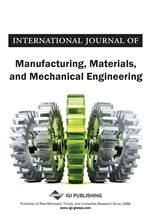Search
Results: 204
Monitoring Neurochemistry in Traumatic Brain Injury Patients Using Microdialysis Integrated with Biosensors
In a traumatically injured brain, the cerebral microdialysis technique allows continuous sampling of fluid from the brain’s extracellular space. The retrieved brain fluid contains useful metabolites that indicate the brain’s...
Cerebral Microdialysate Metabolite Monitoring using Mid-infrared Spectroscopy.
Cerebral Microdialysate Metabolite Monitoring using Mid-infrared Spectroscopy.
Farah C Alimagham, Dan Hutter, Núria Marco-García, Emma Gould, Victoria H Highland, Anna Huefner, Susan Giorgi-Coll, Monica J Killen, Agnieszka P Zakrzewska, Stephen R Elliott, Keri L H Carpenter, Peter J Hutchinson, Tanya Hutter
Sep 25, 2021
Published by: Analytical chemistry
Development of an open technology sensor suite for assisted living
Development of an open technology sensor suite for assisted living
Foreword, author bios, artist's statement
p s
Jan 06, 2012
The preface to the issue, author bios, and an artist's statement from Tanya Doody on the cover art, Greeting Gesture.
Published by: Memorial University of Newfoundland
Foreword, author bios, artist's statement
p s
Jan 06, 2012
The preface to the issue, author bios, and an artist's statement from Tanya Doody on the cover art, Greeting Gesture.
Published by: Memorial University of Newfoundland
Reduced Barrier for Ion Migration in Mixed-Halide Perovskites.
Lucie McGovern, Gianluca Grimaldi, Moritz H Futscher, Eline M Hutter, Loreta A Muscarella, Moritz C Schmidt, Bruno Ehrler
Feb 02, 2022
Halide alloying in metal halide perovskites is a useful tool for optoelectronic applications requiring a specific bandgap. However, mixed-halide perovskites show ion migration in the perovskite layer, leading to phase...
Vapour-Deposited Cesium Lead Iodide Perovskites
Eline M Hutter, Rebecca J Sutton, Sanjana Chandrashekar, Mojtaba Abdi-Jalebi, Samuel D Stranks, Henry J Snaith, Tom J Savenije
Nov 01, 2018
Metal halide perovskites such as methylammonium lead iodide (MAPbI3) are highly promising materials for photovoltaics. However, the relationship between the organic nature of the cation and the optoelectronic quality remains...
CNC Milling of Medical-Grade PMMA
This study evaluates CNC milling parameters (spindle speed, depth of cut, and feed rate) on medical-grade PMMA. A single objective analysis conducted showed that the optimal material removal rate (MRR) occurs at a spindle speed...
Published by: IGI Global Scientific Publishing
The time-course of component processes of selective attention.
Attentional selection shapes human perception, enhancing relevant information, according to behavioral goals. While many studies have investigated individual neural signatures of attention, here we used multivariate decoding of...
Attentional template decoding Selective attention Visual processing Adolescent Adult Attention Brain Mapping Cerebral Cortex Electroencephalography Female Humans Magnetic Resonance Imaging Magnetoencephalography Male pattern recognition Visual Pitch Perception Psychomotor Performance Spatio-Temporal Analysis Time Factors Young Adult
Responsibility for Digital Archiving and Long Term Access to Digital Data
This report presents the findings of an investigation into opinions on the responsibility for maintaining an archive of digital materials produced in the UK and Ireland. The study was conducted by means of focus group meetings...
Published by: British Library Research and Innovation Centre
The Functional Convergence and Heterogeneity of Social, Episodic, and Self-Referential Thought in the Default Mode Network.
The default mode network (DMN) is engaged in a variety of cognitive settings, including social, semantic, temporal, spatial, and self-related tasks. Andrews-Hanna et al. (2010; Andrews-Hanna 2012) proposed that the DMN consists...
Cytokinin Targets Auxin Transport to Promote Shoot Branching.
Arabidopsis Arabidopsis Proteins Biological Transport Cytokinins DNA-Binding Proteins Gene Expression Regulation Plant Indoleacetic Acids Membrane Transport Proteins Mutation Nitrates Plant Shoots Plant Stems Plants Genetically Modified Promoter Regions Genetic Signal Transduction Transcription Factors
Direct-indirect character of the bandgap in methylammonium lead iodide perovskite.
Metal halide perovskites such as methylammonium lead iodide (CH3NH3PbI3) are generating great excitement due to their outstanding optoelectronic properties, which lend them to application in high-efficiency solar cells and...
Toward better understanding of the catalytic action of acidic zeolites
Studies of cracking reactions of alkanes with three or more carbon atoms have been central to the development of our understanding of the catalytic action of acidic zeolites, which are important catalysts in petrochemical and...
Reversible reduction drives anion ejection and C60 binding within an FeII 4L6 cage.
FeII 4L6 tetrahedral cage 1 was prepared from a redox-active dicationic naphthalenediimide (NDI) ligand. The +20 charge of the cage makes it a good host for anionic guests, with no binding observed for neutral aromatic...
|
|< |
< |
1 |

